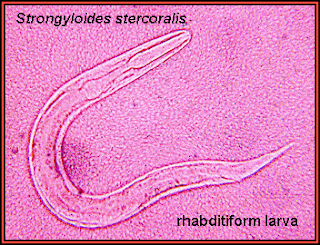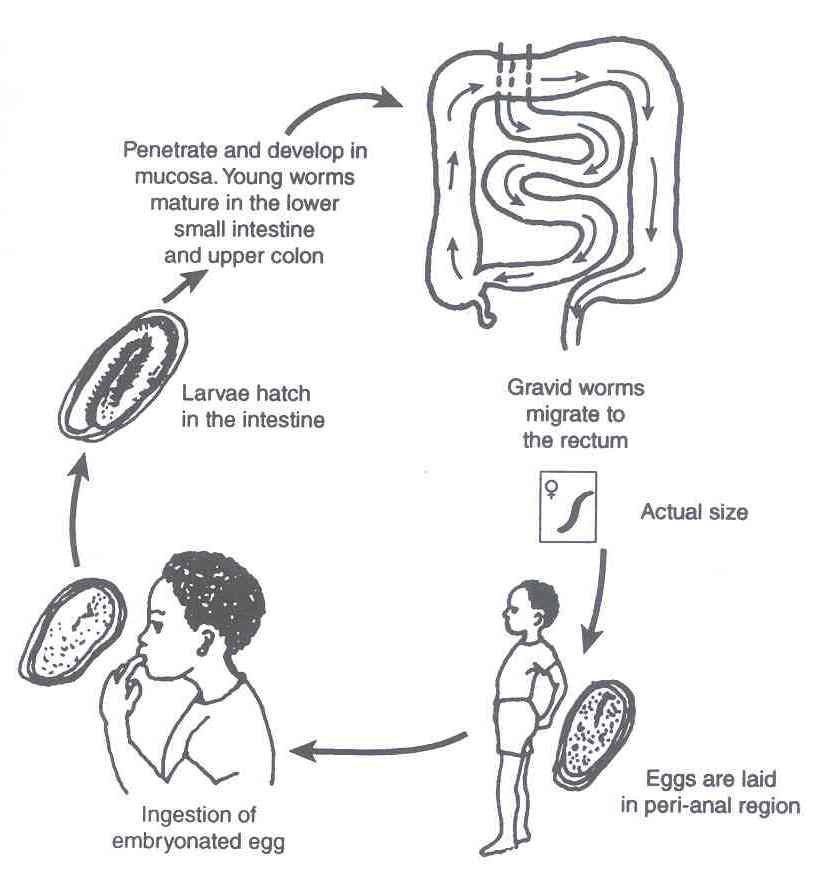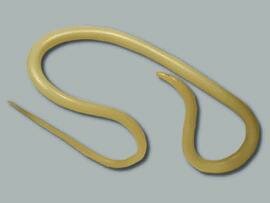Class: Nematoda
Order: Trichurata
Genus: Trichuris
Species: Trichuris trichiuria
eggs of trichuris trichuria
- World wide distribution.
- Most common intestinal nematodes in South East Asia.
- Size of adults:
- Male : 30 - 45 mm long.
- Female : 35 - 50 mm long.
- Male have a single spicule which is surrounded by sheath.
- The anterior 3/5 in elongated and thin, the posterior 2/5 is fleshy and bulbous.
- The adults are mainly located in the caecum.
- Eggs are barrel-shaped, brownish in colour and have a transparent blister like plugs at both ends.
- In the soil, the eggs become infective in about 3 weeks.

Trichuris trichiura (a) female (b) male
Life Cycle
- Infection occurs by ingesting embryonated eggs.
- The larva penetrates the gut wall and return to the lumen to mature into adult.
- Worms attached themselves by threading their anterior ends into the mucus membrane.
- The posterior end hangs free in the lumen.
- The development in the host takes about 3 months to complete.
Life Cycle
Diagnosis
- Present of barrel-shaped eggs in the faeces.
- Sigmoidscope or proctoscope my show worms attached to the mucus membrane.
- Intact worm may be passed out in the faeces.

















